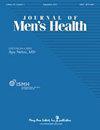下一代患者教育:试点项目引入虚拟现实男性预防健康
IF 0.6
4区 医学
Q4 Medicine
引用次数: 0
摘要
背景:迫切需要旨在教育男性接受更健康的生活方式的预防性干预措施,以减轻与生活方式和习惯相关的疾病风险。虚拟现实(VR)技术提供了身临其境的视觉、触觉和动觉教育体验,这可能是男性学习风格偏好的原因。我们开发了一个基于VR的心血管健康教育课程,嵌入在一个全面的年度体检中,假设VR既引人入胜,又有效地教育患者关于心脏病的知识。方法:邀请208名男性患者到某预防保健中心进行心血管健康和风险教育的VR教育。排除标准包括幽闭恐惧症、光致偏头痛、头晕和癫痫。在参与之前,受试者回答了一个简短的心血管健康知识评估。课程结束后,他们回答了一份同等的知识评估,以及一份关于体验的调查。结果:在潜在的参与者中,179人(86%)选择继续VR体验。下降的原因包括时间限制、忧虑和没有兴趣。在参与者中,7人(4%)因头痛(2人)、幽闭恐惧症(1人)和佩戴大眼镜带来的不适(4人)而流产。通过问题进行正确回答的初始比例显示中位数为56.7%(范围为17.7%至79.7%);在VR会话之后,检测到显着上升到96.7%(范围为93.5%至98.7%)(p = 0.016)。调查结果一致是积极的;100%的受访者强烈同意(78%)或同意(22%)VR体验是愉快的和值得的(李克特量表为5分)。结论:基于vr的教育项目已被纳入年度综合体检,最终可能为男性提供教育益处。虚拟现实体验得到了非常积极的评价,并导致心血管健康知识的统计显着提高。未来对这些下一代患者教育方法和传统患者教育方法的直接比较将确定VR方法是否比传统患者教育方法更具优势。本文章由计算机程序翻译,如有差异,请以英文原文为准。
Next-Generation Patient Education: Pilot Program Introduces Virtual Reality for Men's Preventive Health
Background : Preventive interventions designed to educate men to embrace healthier lifestyles are urgently needed to mitigate the risk of diseases correlated to lifestyle and habits. Virtual reality (VR) technologies offer an immersive visual, tactile, and kinesthetic educational experience, for which male learning style preference may exist. We developed a VR-based cardiovascular health educational session, embedded within a comprehensive annual physical examination, under the hypothesis that VR is both engaging, and effectively educates patients about heart disease. Methods : 208 male patients presenting to a preventive health center were invited to participate in a VR educational session for cardiovascular health and risk education. Exclusion criteria included claustrophobia, light-induced migraines, dizziness, and seizure disorder. Before participating, subjects answered a brief cardiovascular health knowledge assessment. Following the session, they answered an equivalent knowledge assessment, and a survey regarding the experience. Results : Of potential enrollees, 179 (86%) elected to proceed with the VR experience. Reasons for decline included time constraints, apprehension, and no interest. Among participants, 7 (4%) aborted due to: headache (2), claustrophobia (1), and discomfort related to wearing large glasses in the VR headset (4). The initial proportion of correct responses by question demonstrated a median of 56.7% (range 17.7% to 79.7%); following the VR session, a significant rise to 96.7% (range 93.5% to 98.7%) was detected ( p = 0.016). Survey results were uniformly positive; 100% of respondees strongly agreed (78%) or agreed (22%) that the VR experience was enjoyable and worthwhile, on a 5-point Likert scale. Conclusions : A VR-based educational program has been incorporated into an annual comprehensive physical examination session, and ultimately may provide education benefits for men. The VR experience was rated very positively and resulted in statistically significant improvements in knowledge around cardiovascular health. Future direct comparisons between these next-generation and traditional patient education methods will establish whether VR approaches offer benefits over traditional patient education methods.
求助全文
通过发布文献求助,成功后即可免费获取论文全文。
去求助
来源期刊

Journal of Men's Health
Medicine-Urology
CiteScore
0.70
自引率
28.60%
发文量
153
审稿时长
10 weeks
期刊介绍:
JOMH is an international, peer-reviewed, open access journal. JOMH publishes cutting-edge advances in a wide range of diseases and conditions, including diagnostic procedures, therapeutic management strategies, and innovative clinical research in gender-based biology. It also addresses sexual disparities in health, life expectancy, lifestyle and behaviors and so on. Scientists are encouraged to publish their experimental, theoretical, and descriptive studies and observations in as much detail as possible.
 求助内容:
求助内容: 应助结果提醒方式:
应助结果提醒方式:


